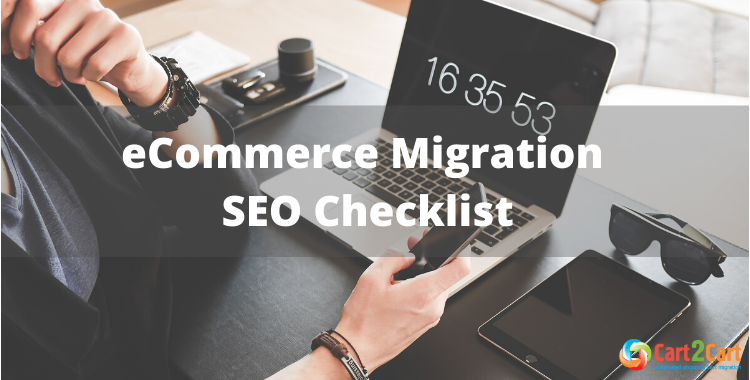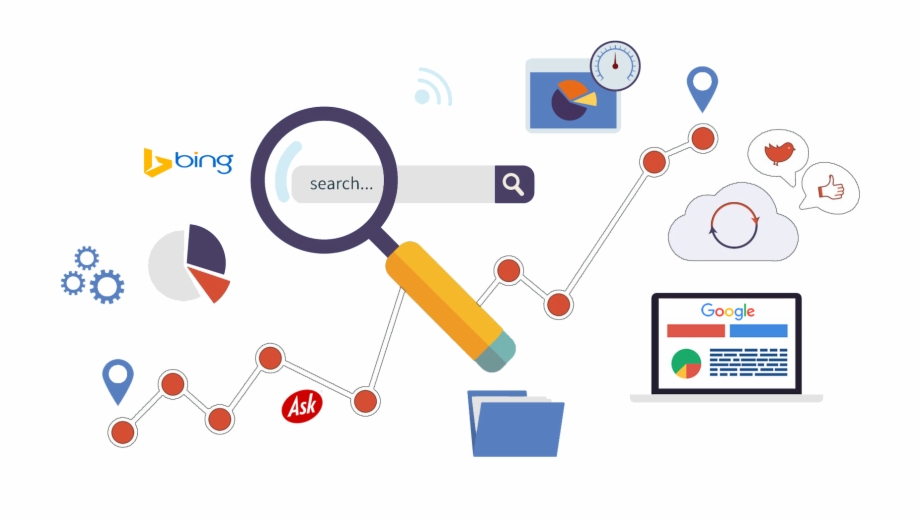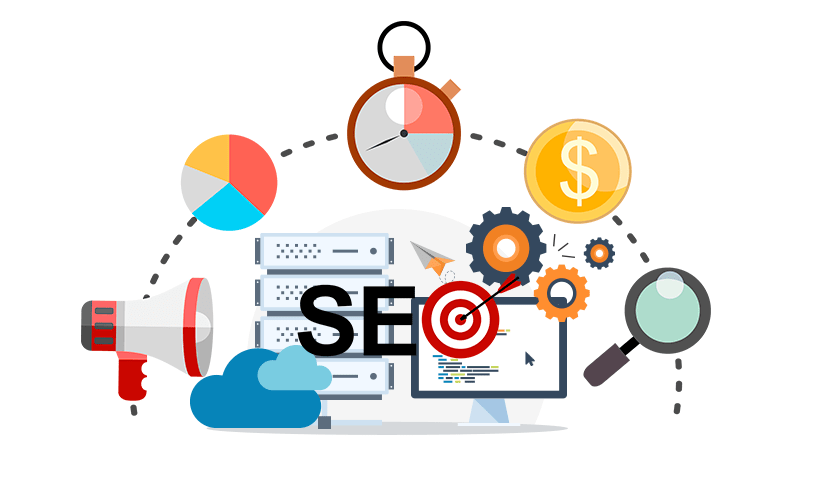Growth is what every business depends on, CEO demands, sales, and marketing feel daily pressure to deliver. It sounds as natural as grass turning greener. So when you have noticed that your shopping platform is hard to use, you’re losing money. That’s high time for eCommerce migration.
You know that any business changes require thorough planning to avoid that “gotchas” moments. The shopping cart migration requires a diligent carry-out. This is a kind of guarantee that your online store will hit the ground running on the new platform.
Why Is It So Important to Migrate SEO?
Well, apart from choosing a new platform, migration options, you should care about keeping SEO of your site. Excluding the SEO aspect of your website during the eCommerce migration may finish with dropping the organic traffic and rankings. That affects conversions and revenue.
There are dozens of posts on the internet that suggest rather vague SEO tips and advice. But without a step-by-step plan, you can be sure that you won't lose your SEO after the migration. Checking marks on the checklist without a strategy won't make your store any good. It even could make your website vulnerable.
In this post, we're taking an in-depth look at the question of the store migration SEO impact: how can it be sustainably handled? Which aspects of migration strategy require closer attention? What can ensure the success of keeping your website SEO? And what to include in the checklist? Take your time to look through this eCommerce migration checklist before setting off your platform swap.
SEO Lessons to Learn Before eCommerce Replatforming
-
eCommerce migration is not an easy road. The twist: this process requires a strategy and detailed plan to guarantee ongoing success. Most of the SEO bumps happen after the migration. Thus, fixing issues and errors before the platform switch will help make sure that SEO indicators stay the same. For some websites, such an approach boosted the traffic on the new platform.
-
Each migration is different. You may migrate the store to a new design, or move to a hosted or self-hosted platform, as well as migrate due to a domain change. Either way, the critical point is to find out how to reduce any traffic and rankings drops. This is where an optimized SEO migration strategy will save you from a potential headache down the road.
What kind of migration do you want to launch?
The impact of SEO depends on the type of migration. Let’s say you change your store design. There are no drops in SEO as the URLs stay the same.
SEO tip: if you got a new design, you should be careful with JavaScript elements. Some of them may cloak the content to get the page stuffed with keywords. More than often, such items are found on spam websites that don’t display these keywords. Google doesn’t like such things.
Monitor things carefully when you change the domain or change a URL structure with a lot of redirects. In this case, your main task is to get all new URLs indexed by Google. Don’t avoid the fact that the new URL paths mean a fundamental change for your website. So you can either update the sitemap or use the Google Search Console to see if the webpages are live and request indexing for the new URLs.
In terms of SEO, eCommerce migration will be most impactful if it involves changing all the URLs. That may happen because different eCommerce platforms have specific URLs structures. To illustrate this point, migrating from Magento to WooCommerce often involves adjusting URL patterns. In Shopify, a standard path to products (called “collections”) would have the URL structure like this: domain.com/products/productname or this: domain.com/collections/collectionname/products/productname. In its turn, WordPress has its own URL structures that serve various needs. So keeping the original URL after the migration is not always possible (but here’s the way to preserve your URL structure using Cart2Cart).
Why Does the eCommerce Migration SEO Matter?
Online store migration might bring a bunch of small (and big) SEO issues. They can lead to traffic drops, low conversion and, therefore, revenue rates. Why does it happen? Well, the problem lies in the fact that business owners focus only on measuring the delivery part. They are awaiting the migration results and shiny stores on new platforms ignoring the preparation stage.
The eCommerce migration checklist has got dozens of points to inspect and control. This is because you have to provide the new website structure for indexing and collect all the potential problems, including how to avoid risks with migration insurance, before you set up and start the shopping cart migration.
Seamless SEO Migration
Keep your SEO intact during your store migration with Cart2Cart! Ensure smooth transitions and preserve rankings—no hassle. Start your free demo now!
TRY IT FREE
What Does the Store Migration SEO Checklist Include?
Businesses of ant type and size are striving for the undisrupted workflow. To provide it, you should develop a thorough plan and have your team on the same page. Your ecommerce migration SEO checklist should include 3 parts with well-developed and understandable for you and the team. Let’s see a scenario that will help you to maintain SEO rankings and organic traffic.
Run your store audit and spot the places for improvement
Maintaining a vision of your current SEO indicators should be the first step to take. The data you have on the old website will serve as a reference for the new website. The point is to see how things are running here, collect the weak spots and improve where is possible.
Here is the list to work on during stage 1:
-
-
Crawl your eCommerce website with an SEO spider tool. There are many options to choose: Screaming Frog, SEMrush, Moz Pro, Ahrefs, DeepCrawl, and others. Just select the most convenient tool for you. With that data, you will have the list of URLs and additional information about them.
-
Run the Google Search Console Analysis. Google has its own data about your website on a dashboard. So you can export it in a .csv file, copy and transfer the data to use later for a new online store. Before diving deeper, it's essential to prepare your source store for migration.
-
Compare the data from a spider tool and Google Search Console and collect the data for future reference. Check for meta robots “nofollow” tags in the source code, pages with a “no index” tag and all known live URLs. Remember to review canonical tags, title tags, meta description tags and header tags usage (H1, H2, H3 and the like.)
-
Double-check your migration scenario to evaluate what should be the next step. Determine all pre-migration actions and define whether you are going to change a domain name, URL structure, website architecture. It is a good time to update your keyword matrix and run a keyword gap analysis.
-
If you’re going to go with Cart2Cart for migration, use the homepage rotator to find details on your specific migration direction and learn what your possibilities are (like, what data types and entities can be moved over, and what are the additional migration options, like SEO URLs migration, 301 redirects, etc).
-
Work out a 301 redirect strategy (you’ll only need one in case there’s no way you can keep the URL structure on your new store) - basically, define all the pages on your current store that are receiving organic visits and boast high rankings, to make sure they get properly redirected after the move.
-
What is better for SEO, 301 redirect vs. 404 page?
If the URL of the page isn’t changing - you have nothing to worry about, the SEO and rankings won’t be affected.
If the URL changes (for example, a new domain name, or a different URL structure after the migration), the solution is two-fold: you can redirect the legacy pages as 301 or designate them as 404 pages.
When you consider which one to use - 301 or 404 - analyze the organic traffic and external backlinks. If these SEO indicators are vital for your performance, then use 301 redirects to keep the page ranking and authority on the website.
Remember, the content of the new page should be as close as possible to the content of the redirected page. Try to avoid “soft 404” - when the user redirected to a page that relatively close the content of the old page. Sometimes, it makes more sense to land a visitor on the 404 pages.
Also, the inbound links play their specific role in your SEO performance. Use 301 redirects for transferring these links on the new website. In that way, you will keep their authority.
Prepare your new store and migrate data in there
-
-
-
If your new eCommerce platform is hosted (like Shopify), simply register an account to have a store created. In case it’s self-hosted, you’ll need to have it installed (as an alternative, just to check the new cart, you can use Cart2Cart migration preview - migrate your data to a Cart2Cart test store to get the feel of the new platform before moving everything into it, this service is free).
-
It’s important to make sure that the search engine crawlers cannot access the new website while it’s in the maintenance mode. It can be done via the robots.txt file command:
-
-
User-agent: *
Disallow: /
-
-
-
migrate your data from one shopping cart to another (if you pick Cart2Cart, here’s the overview of the migration setup steps). Make use of the additional migration options (if applicable and totally optional) like automated 301 redirects (which help preserve SEO juice that belonged to the old pages) and preserved SEO URLs (can help preserve the URL structure of the old store).
-
-
Check the newly launched website
When your eCommerce migration is done and all data got to a new place, time to perform a post-migration checkup to make sure that everything has gone as planned.
-
-
-
-
Run a new website crawl. Check the implementation of 301 redirects, verify all known 301 and 200-status code pages. As well, you should identify if there are any technical issues like blocked search bots access (monitor Google Search Console coverage reports for this).
-
Make sure that “nofollow” and “index, follow” tags are on the expected pages. Don’t forget to search for 404 pages that aren’t supposed to be there. Verify the status of the internal links and ensure there are no broken ones. Next, you should check the website for duplicate content, title tags, meta descriptions, header usage, image attributes, etc (it can be as simple as running a site audit using SEMRush, Ahrefs or other similar tools).
-
Run a couple of speed tests on various pages.
-
Look for 404 (not found pages). Consider creating the necessary ones from scratch (like About us page) if needed, and creating a custom 404 page for the pages you no longer need.
-
Resubmit your XML sitemap to Google Search Console to have your newly migrated site reindexed.
-
-
-
What Are the Key Ecommerce Website Migration Tips?
Now your online shop runs on a new platform. Not all things might go as planned, so be ready for a traffic drop. To detect the decrease, you should look for the weak spots and fix the problem. Quite often, it happens because some pages were left “noindex.” One of the best practices is to keep monitoring your new eCommerce website after launch.
Either way, on the first week after migration, you should monitor the Google Search Console dashboard with your data and ensure that new pages were crawled. During the next few weeks, check Google Search Console for indexed pages, sitemap errors etc. In a month, you can set a traffic check to see if the SEO indicators are fine. If you have some traffic loss, dig into the pages to define what are the problems and fix them.
Final Words
The eCommerce migrations vary from one online store to another. That makes it quite difficult to predict what impact can be done on SEO indicators of your website. However, this migration checklist aims to give you a four-fold benefit: a) broader view to this aspect, b) avoiding the common mistakes, c) streamlining your migration process, and d) gaining minimal negative impact on your store SEO.
Store migration sounds tempting? It takes just a few minutes to try with Cart2Cart, and it’s totally free, so set up your Demo now and get ready for the new feel and look of your site!
Monthly Update – December 2025
As 2025 draws to a close, eCommerce migration strategies are heavily influenced by the imperative to deliver hyper-personalized customer experiences. Businesses are now prioritizing platforms that offer advanced analytics and AI capabilities to deeply understand and optimize the entire customer journey. When replatforming, it's crucial to select a solution that ensures comprehensive data transfer of historical customer interactions, purchase patterns, and browsing behavior. This foundational data empowers you to immediately leverage segmentation, AI-driven product recommendations, and tailored marketing campaigns on your new site, directly boosting conversion rates and fostering long-term customer loyalty.
Another significant trend for December 2025 and beyond is preparing for an increasingly privacy-centric digital landscape, including a cookieless future. Merchants must prioritize platforms and migration services that integrate robust data privacy features, consent management, and server-side tracking solutions. Proactively addressing these compliance and trust-building aspects during replatforming is not just about avoiding penalties; it's about establishing a reputable brand image and maintaining consumer confidence. A forward-thinking migration ensures your store operates efficiently and ethically in the evolving digital ecosystem, providing a competitive edge heading into the new year.
For more details, explore our FAQ section or schedule a call with a migration expert.










Comment by andrew
This was a very informative blog and I really enjoyed reading it.
Comment by FDI India
Superb information. Many thanks!
Comment by Natalia Bohdanets
Thanks for your comment! Much appreciated)
Comment by Btysun
Great article . thank’s for sharing
Btysun
Comment by Natalia Bohdanets
Thanks for your input! Much appreciated!